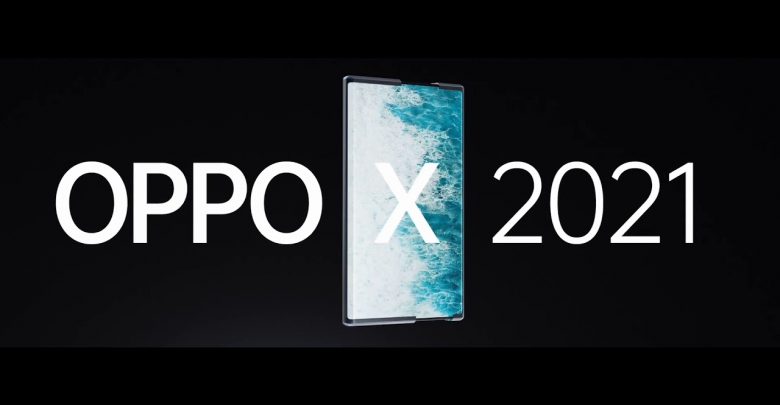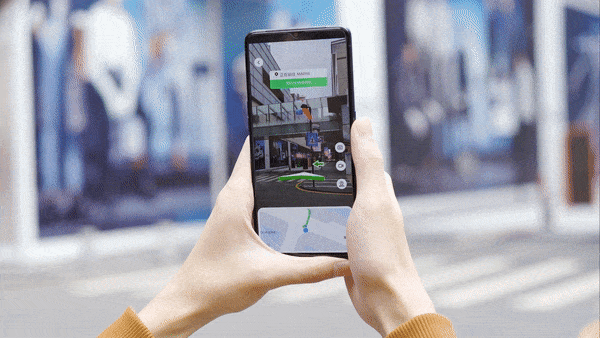
Chinese mobile manufacturer, Oppo just announced a new concept, “rollable screens” on Tuesday. The Oppo X 2021 was part of the company’s Oppo Inno Day event. The theme was “Leap into the Future” and they showcased a few experimental products. But at the end of October, LG too was working on a smartphone with a rollable display, according to a report by XDA developers The device, codenamed Project B, was teased during the launch of LG Wing, and it’s expected to hit the market in March next year. But Oppo showcased their version of a rollable phone before LG could. And it looks beautiful!
Oppo X 2021 description
It consist of a roll Motor powertrain, 2-in-1 Plate and the Warp Track high-strength screen laminate which are “proprietary tech” according to Oppo. All of it is combined with an OLED display that enlarges from 6.7 inches to max 7.4 inches, converting it from a regular smartphone to a medium sized tablet. The powertrain motor generates a uniform force to expand and contract the device while ensuring the display isnt damaged when rolling. The plus side about the rollable screen is the ability to use any display size between 6.7 to 7.4 inches as you want. But in a foldable phone, you can only choose two sizes. Folded and unfolded.

Since the rollable display is pretty delicate, the Oppo X 2021’s proprietary Warp Track high-strength screen laminate adds some strength to the display. The laminate is made with high-strength steel, and it’s only 0.1mm thick at its thinnest. As shown in the image below, the Warp Track laminate forms a caterpillar track behind the display, which adds strength without increasing resistance.

The tech used on the Oppo X 2021 is nothing short of amazing! Oppo has already filed around 122 patents. 12 of these patents are for the rolling mechanism alone.
The idea of a rollable display is nothing new. LG launched a rollable OLED TV in the consumer market just a month back, and they’ll ask you to shell out $87k for one. Keeping the cost aside, using this same tech in a smartphone is seemingly much more complicated, especially when it comes to structural strength and durability due to the small form factor. If the phone makers can overcome those problems, it would sure be nice to have rollable phones as an alternative to bulkier foldable phones.
Here’s a demo of their rollable TV at CES 2020.
Oppo hasn’t given any timeline for when it will go on sale, so even though the technology is here, it doesn’t seem to be ready for the mainstream just yet. From the limited number of hands-on demos we’ve seen, it looks as though the concept phone can indeed roll out and retract its display as advertised.
In the long-term, rollable phones might have more potential than foldables, though we’ll have to wait and see how the technology plays out over the next few years. There’s a good chance we might see the first rollable screen phone go on sale at some point in 2021.

OPPO AR Glass 2021 & OPPO CybeReal
Along with the announcement of the Oppo X 2021, the company showcased two more innovative products at the Oppo Inno Day event. They are Oppo AR Glass 2021 and OPPO CybeReal. The AR glass is a follow-up of it’s first gen AR glass that was launched last December. The second-gen AR smart glasses are 75% lighter than last year’s model and feature a new “split-design”. The OPPO AR Glass 2021 packs a bunch of sensors for both real-time SLAM local mapping and gesture tracking (up to 21 markers per hand): binocular fisheye cameras, that capture the environment around you and provide local mapping and 3D spatial localization with low latency a Time-of-Flight sensor and an RGB camera. The “Birdbath” optical solution which is a common and cheaper implementation on AR glasses, has a 98% increased brightness uniformity is said to mimic the experience of a 90-inch TV screen at a distance of 3 meters. The glasses will also support voice command via Oppo’s unique Breeno voice assistant built-in for voice commands


